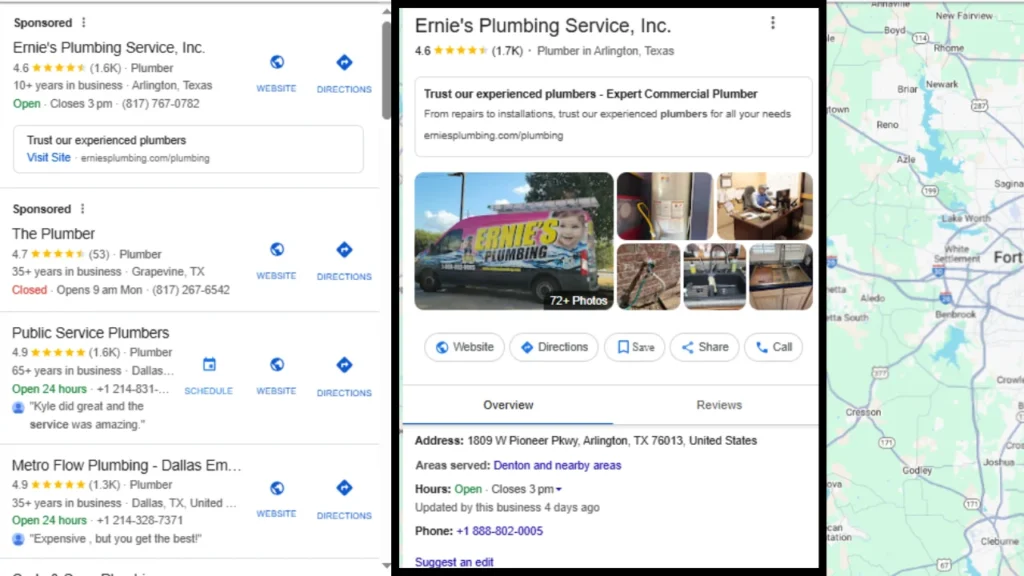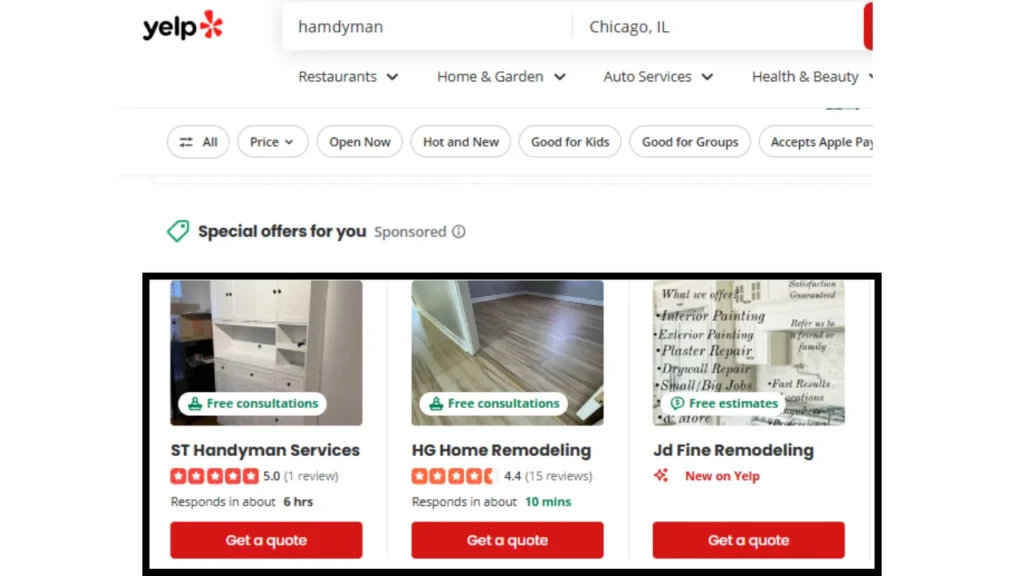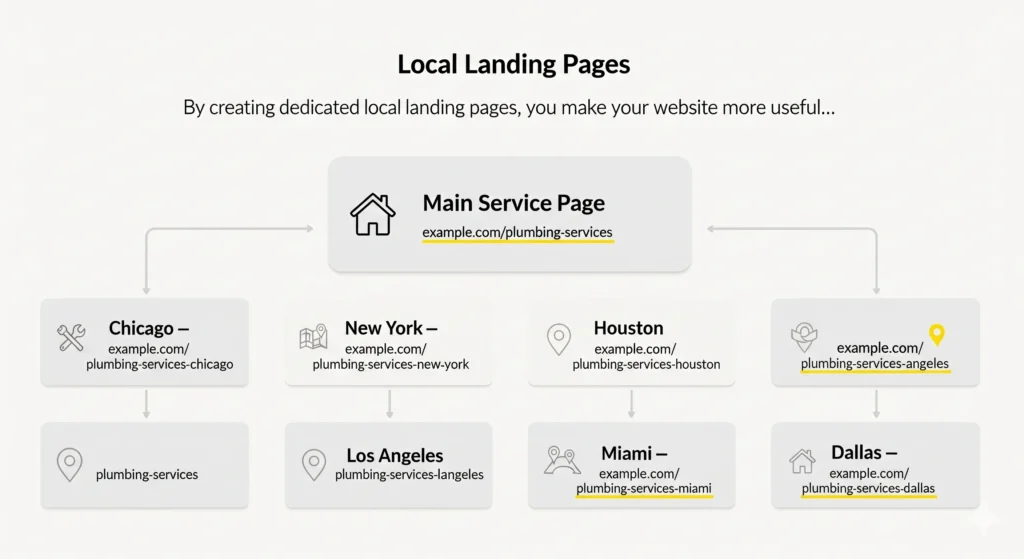Table of Contents
ToggleIntroduction: Why Local SEO Matters More Than Ever
Running a small business today isn’t just about offering great products or services—it’s about being found online when people need you the most. Imagine this: someone nearby searches “best bakery near me” or “plumber in [your city]” on Google. If your business doesn’t appear in the top results, that customer will likely choose a competitor—even if you provide better quality and service.
Potential clients look for companies like yours on Google and Google Maps every single day.
Without the right local search optimization, most small businesses remain invisible online. This means missed opportunities, fewer leads, and lost sales—even when their offerings are excellent.
The good news? With the right strategy, you can turn this around. In this guide, you’ll discover proven local SEO tips for small businesses that are beginner-friendly, expert-backed, and designed for real results. By following these steps, you’ll improve your Google Maps ranking, show up in the local 3-pack, and attract more nearby customers in 2025. Let’s get started.
What Is Local SEO?
Local SEO means improving your business online so that people in your city or area can easily find you on Google.
It is a way to make sure your shop, service, or office shows up when someone nearby is searching for what you offer.
For example, if someone types “plumber near me” or “best coffee shop in [city name]”, Google will show the most relevant and trusted businesses close to that person. This process is called local search optimization.
By using the right local SEO tips for small businesses, you can:
- appear in the top three local results (the 3-pack) on Google Maps.
- Get discovered in nearby searches, where people are ready to buy.
- Build trust and credibility with correct information and good reviews.
In short, Local SEO helps your business get seen by the right people, at the right time, in the right place. It gives small businesses a fair chance to compete with bigger brands and attract more local customers.
If you want to dive deeper into SEO strategies beyond local optimization, check out our complete SEO guide for small business owners to learn everything step by step.”
15 Actionable Local SEO Tips for Small Businesses
1. Claim and Optimize Your Google Business Profile (GBP)
Your Google Business Profile (GBP) is the starting point of every successful local SEO strategy. It’s frequently the first thing people see when they search for your company on Google, so think of it as your online storefront.
Here’s how to make the most of it:
- Add accurate NAP details (Name, Address, Phone number) so customers and Google both can trust your information.
- Provide precise information about your categories, services, and business hours.
- Upload high-quality photos of your shop, office, team, or products to build trust.
- Use location-based keywords in your business description, like “family-owned bakery in Chicago” or “plumber serving Dallas.”
- Keep your profile active by posting updates, offers, events, or seasonal promotions.
A well-optimized and regularly updated GBP not only improves your Google Maps ranking, but also increases your chances of showing up in the local 3-pack — the most valuable spot for local businesses.

2. Ensure NAP Consistency Everywhere
NAP stands for Name, Address, and Phone number — the essential details that tell Google and customers exactly who you are and where to find you. Keeping these details consistent across all online platforms is a simple but powerful step in building trust and improving local SEO.
Why consistency matters:
- Search engines trust businesses with accurate info. Google ranks businesses higher when your NAP details match across your website, Google Business Profile, social media, and online directories.
- Customers get clarity. Inconsistent information can confuse potential clients, making them hesitant to contact you.
- Stronger local rankings. Clear and consistent data helps your business appear in proximity-based searches and increases your chances of showing up in the local 3-pack.
How to maintain NAP consistency:
- Verify your official company name, address, and phone number on both your Google Business Profile and website.
- Update all online business listings and directories so they match your official NAP exactly.
- Avoid small variations, such as abbreviations (e.g., “St.” vs. “Street”) or formatting differences.
- Periodically check your listings to correct any inaccurate or inconsistent information.
Maintaining consistent NAP everywhere is a simple yet essential strategy that boosts credibility, improves visibility in local searches, and helps customers find your business easily.
3. Get Listed in Local Citations & Directories
Getting your company listed in internet directories and local citations is one of the best strategies to improve your local SEO. These listings help Google verify your business information and increase your visibility in local searches.
What to do:
- Popular directories: Make sure your business is listed on well-known platforms like Yelp, Yellow Pages, Bing Places, and Apple Maps.
- Community and local sites: Join chamber of commerce directories, local business associations, or neighborhood websites to build credibility.
- Other relevant listings: Look for community-based directories related to your industry or location.
Why this matters:
- Each citation acts as an authority signal, telling Google that your business is real and trustworthy.
- Consistent and accurate listings improve your chances of ranking higher in local search results and Google Maps.
- These listings also make it easier for customers to find your business across multiple platforms, which can lead to more calls, visits, and sales.
Make sure that the information is current by checking your listings on a regular basis. By building a strong presence in local citations and directories, you strengthen your local search optimization and make it easier for nearby customers to discover your business.

4. Use Location-Based Keywords in Your Website
Using location-based keywords on your website is one of the simplest yet most powerful ways to improve your local SEO. Instead of targeting generic terms like “SEO services” or “plumbing,” add your city or neighborhood to make your content more relevant for nearby customers.
Examples of geo-targeted keywords:
- “SEO services in Chicago”
- “Best handyman near Dallas”
- “Family dentist in Brooklyn”
Why this matters:
- Helps your website appear in proximity-based searches, showing your business to customers who are physically close.
- increases the likelihood of showing up in “near me” searches, which are frequently undertaken by people who are eager to act right away.
- Makes your content more relevant to both Google and local customers, improving your overall visibility and trust.
How to implement:
- Incorporate the name of your city or neighborhood into headers, meta descriptions, page names, and naturally occurring material on your website.
- In the event that your company serves more than one area, create local landing pages.
- Avoid overstuffing keywords — they should appear naturally as part of helpful, informative content.
By strategically using location-based keywords, you make it easier for nearby customers to find your business online and increase your chances of showing up in local search results and Google Maps.
5. Create Local Landing Pages
If your business serves more than one city or neighborhood, creating dedicated local landing pages for each area is essential. These pages help Google understand exactly which locations you serve and make it easier for potential customers to find your business in proximity-based searches.
Example URLs:
- /plumbing-services-chicago
- /plumbing-services-springfield
What each page should include:
- Unique local content: Talk about your services in that specific city or neighborhood instead of copying content from your main page.
- Testimonials and reviews: To establish credibility and trust, highlight consumer comments in that field.
- Directions and contact info: Add Google Maps directions, a local phone number, and easy ways for customers to reach you.
- Local keywords: Naturally include phrases like the city name or neighborhood in headings, meta descriptions, and page content.
Why this is important:
- Helps your business appear in local search results for each specific area you serve.
- Improves chances of showing up in the Google Maps 3-pack for multiple locations.
- Builds trust with nearby customers by showing that you understand and serve their local community.
By creating dedicated local landing pages, you make your website more useful for both customers and Google, increasing visibility, credibility, and leads in every area your business operates.

6. Add Schema Markup for Local SEO
One kind of code that aids search engines in comprehending your company is called schema markup. By adding a local business schema, you can show important details like:
- Ratings and reviews
- Opening hours
- Address and contact info
Why it matters:
- Makes your business information clear to Google, improving trust signals for local SEO.
- Can enhance your listing in search results with rich snippets, attracting more clicks.
- Helps your business appear more credible to potential customers.
Adding schema markup is a simple step that boosts your local search visibility and makes it easier for nearby customers to find and trust your business.
7. Focus on Mobile-Friendly & Fast Websites
Most local searches happen on smartphones. If your site doesn’t load quickly or isn’t mobile-friendly, customers will leave and choose a competitor.
How to optimize:
- Ensure that the design of your website is responsive and functions properly across all devices.
- Compress and optimize images for a fast-loading small business website.
- Add click-to-call buttons so customers can contact you instantly.

A mobile-friendly, fast website improves user experience, boosts your Google rankings, and helps convert local visitors into paying customers.
8. Collect & Manage Online Reviews
Online reviews work like digital word-of-mouth for your business. A steady flow of positive feedback not only builds trust with new customers but also improves your visibility in local search.
Best practices:
- Ask happy customers to leave star ratings on Google and other platforms.
- Respond politely to both positive and negative reviews — it shows professionalism.
- Showcase genuine customer testimonials on your website and social media.
Strong reviews send powerful trust signals, boost your credibility, and support effective reputation marketing for long-term growth.
Struggling to get traffic and customers? At GlobalRankWeb, our trusted SEO experts for small business help you rank higher, attract local clients, and start seeing real results fast.
9. Publish Hyperlocal Blog Content
Content is the heart of local SEO, and creating hyperlocal blog posts can set your small business apart. Instead of only writing about your services, focus on topics that connect directly with your community.
You can cover:
- Local events and festivals happening in your area
- Inspiring community stories or customer spotlights
- Seasonal guides or neighborhood recommendations
Example: Write an article like “5 Best Neighborhood Cafes in Brooklyn to Visit This Fall”. Such posts don’t just attract readers — they also bring in local backlinks, increase engagement, and show Google that your business is relevant to nearby searches.
By sharing useful and community-focused content, you position your business as a local authority, build stronger trust with your audience, and improve your chances of ranking higher in local search results.
10. Build Backlinks from Local Websites
Backlinks are like votes of confidence for your business, and links from local sources carry even more weight. When trusted websites in your community mention or link to you, it strengthens your authority in Google’s eyes and improves your chances of ranking in the local map pack.
Ways to earn local backlinks:
- Partner with community blogs or local business websites.
- Get featured in local news articles or press releases.
- Collaborate with local influencers or organizations to increase reach.
The more credible local sites that point to your business, the stronger your authority signals become, helping you stand out against competitors and attract more nearby customers.
11. Optimize for Voice Search
With the rise of Siri, Alexa, and Google Assistant, more people are using voice commands to find local businesses. Instead of typing, they ask natural questions like:
- “Where is the nearest dentist open right now?”
- “Best pizza shop near me.”
To capture these searches, focus on conversational long-tail keywords that sound like real questions. For example:
- “Affordable dentist in [city]”
- “Family-friendly pizza place near [location]”
Voice search is growing fast, and by optimizing your content for natural language, you can connect with customers who are actively looking for services near them — often ready to take action immediately.
12. Use Social Proof Signals
People trust real experiences more than advertisements. Social proof shows potential customers that others already value your business, making it easier for them to choose you with confidence.
Ways to show social proof:
- Display authentic reviews and ratings on your website and Google profile.
- Share photos or videos of real customers enjoying your product or service.
- Highlight testimonials and case studies that reflect positive results.
The more proof you show of happy customers, the stronger your credibility and trust signals become — turning curious visitors into loyal clients.
13. Add Local CTAs & Conversion Elements
Getting traffic is only half the job — you also need to turn visitors into paying customers. That’s where clear local calls-to-action (CTAs) and conversion elements come in.
Examples of effective local CTAs:
- “Call Now” buttons for instant contact
- Use Google Maps directions so customers can easily find your location
- Appointment or booking forms to secure services quickly
When you make it simple for people to reach you, visit you, or book with you, you remove barriers and increase the chances of converting local visitors into real customers.
14. Keep an Eye on AI & Zero-Click Searches
In 2025, Google and other platforms will often provide answers directly in the search results, meaning users may not even click through to websites. To stay visible, small businesses must adapt to this trend.
How to stay ahead:
- Optimize for predictive and conversational search so your content matches what people are asking.
- Keep your Google Business Profile (GBP) complete with FAQs, services, and updates.
- Use local video SEO on platforms like YouTube Shorts, Instagram Reels, and TikTok to capture attention beyond Google.
By embracing AI-driven search and zero-click results, you ensure your business remains visible, trusted, and competitive in the evolving digital landscape.
15. Track & Improve with Analytics
Local SEO is not a one-time task — it requires regular monitoring and improvement. By using the right tools, you can see what’s working and where you need to adjust.
Essential tools to track performance:
- Google Search Console – monitor search visibility and fix issues
- Google Analytics – track visitor behavior and local traffic sources
- GBP Insights – see how customers find and interact with your profile
By checking which keywords, pages, or listings bring in the most local traffic, you can refine your strategy, double down on what works, and keep improving your results over time.
Benefits of Local SEO for Small Businesses
Investing in local SEO brings real, measurable advantages for small businesses:
- More foot traffic to your shop, office, or physical location.
- Higher call volume and inquiries from nearby customers ready to buy.
- Stronger trust and credibility through reviews, accurate information, and visibility.
- Competitive edge over larger brands by showing up where it matters most — in your community.
In simple words, Local SEO means more visibility, more leads, and steady business growth.
Conclusion: Small Steps, Big Results
For small business owners, applying these local SEO tips for small businesses is no longer optional — it’s essential for survival in today’s competitive digital world. By optimizing your Google Business Profile, collecting and managing reviews, publishing local content, and using geo-targeted strategies, you can steadily grow your visibility, trust, and authority.
But here’s the reality: local SEO is a marathon, not a sprint. It requires time, consistency, and expertise to see lasting results. That’s why many small businesses struggle to keep up on their own.
The good news? With the right approach and support, even small steps can lead to big growth.
Want to boost your local SEO? Check out our guide on keyword research for small business websites to find the right keywords and attract more local customers.
Take Your Local SEO to the Next Level
Your potential customers are searching right now — the question is, will they find you or your competitors?
At GlobalRankWeb, we specialize in helping small businesses improve visibility through Google Maps optimization, on-page SEO, and reputation management. Our goal is simple: make it easier for local customers to discover and trust your business.
If you’re ready to get more visibility, more calls, and more customers in 2025, connect with GlobalRankWeb today. Let’s take steady steps toward making your business a trusted choice in your city.







